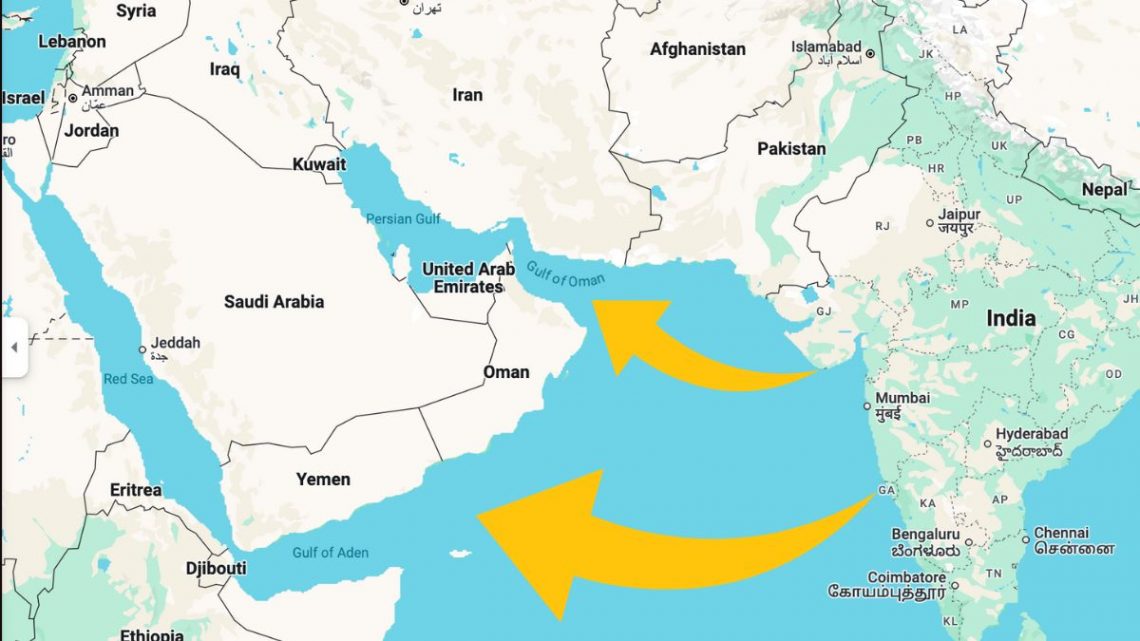India is steadily expanding its naval footprint in the West Asia (Middle East), leveraging port visits, joint exercises, and high-level military engagements to cement its strategic interests in the region.
As conflicts intensify in this key region, New Delhi’s maritime activities show its intent to play a more prominent role in safeguarding regional stability and its own economic security.
West Asia holds unparalleled importance for India, serving as a critical energy supplier and a key trade partner. Approximately 60 per cent of India’s oil and gas imports originate from Gulf nations, making the region vital for its energy security.
One of the key ways India has ramped up presence in West Asia is by accelerating its naval engagements.
The Indian Navy’s First Training Squadron (1TS), comprising INS Tir, INS Shardul, and ICGS Veera, led a series of high-profile port visits and exercises across the Gulf in 2024.
In October alone, there has been a burst of activity.
UAE: The India-UAE Bilateral Naval Exercise saw INS Shardul dock at Port Rashid for joint maritime drills. Overseen by Chief of Naval Staff Admiral Dinesh K. Tripathi, the exercises focused on tactical coordination and trust-building between the two nations.
Oman: The Naseem-Al-Bahr exercise demonstrated India’s growing partnership with Oman’s Royal Navy, featuring anti-aircraft drills, cross-deck operations, and joint training.
Bahrain: Naval engagements in Manama included professional exchanges and cultural outreach programs, strengthening ties with Bahrain’s naval forces.
Iran: At Bandar Abbas, Indian and Iranian forces participated in joint drills and community events, signaling India’s balanced diplomatic approach in a geopolitically sensitive region. Of course, India’s involvement in Chabahar Port is also a key engagement point with Iran.
India’s increased naval presence is closely tied to its economic imperatives in West Asia. The Comprehensive Economic Partnership Agreement (CEPA) with the UAE, signed in 2022, has propelled bilateral trade to $88 billion.
Protecting these economic interests, especially vital shipping lanes in the Persian Gulf, is a priority for India’s maritime strategy.
By maintaining a strong naval presence, India ensures the security of its energy imports and stabilises trade routes crucial for its economy. The deployments also serve to bolster India’s reputation as a reliable partner in maintaining regional stability.
India’s joint exercises with Gulf nations aim to strengthen interoperability and collective maritime security with other nations here.
Drills like Naseem-Al-Bahr in Oman and maritime collaborations with Bahrain and the UAE show India’s proactive approach to tackling these challenges.
Intelligence sharing and tactical training further deepen these partnerships. These exercises are a great opportunity to build goodwill and trust, too.
India’s outreach extends beyond military engagements: the focus is also on cultural diplomacy and humanitarian efforts.
Following the devastating 2023 earthquake in Turkey and Syria, India provided critical aid.
Naval visits here often include community events and cultural exchanges, reflecting India’s intent to build goodwill.
Bollywood’s widespread influence and India’s historical ties to the Gulf further enhance these soft power initiatives, creating a comprehensive engagement strategy.
Link to article –
Amid raging conflict, here’s how India is ramping up its presence in the West Asia
